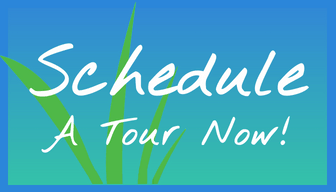 “I’m on the floor, on my back, my left foot reaching for the ceiling; my Thai massage therapist leaning into the back of my extended leg. Got the picture? And then she says – casually – ‘blah, blah, blah… Thai reflexology.’ Well, my head literally shot up from the floor! ‘You mean there is a Thai session just for the feet?’
“I’m on the floor, on my back, my left foot reaching for the ceiling; my Thai massage therapist leaning into the back of my extended leg. Got the picture? And then she says – casually – ‘blah, blah, blah… Thai reflexology.’ Well, my head literally shot up from the floor! ‘You mean there is a Thai session just for the feet?’
And so began my study of Thai foot reflexology.” – KB
In keeping with the saying “aging starts from the legs”, the legs serve as a barometer of health in Asian cultures. We all know that the heart pumps blood to the cells and organs of the body, and contraction of the muscles facilitates venous return. Because of this physiological function, in Asian medicine the legs are referred to as the “second heart.”
When the soles of the feet do not receive enough stimulation, circulation of the blood in the feet and the legs tends to lessen, eventually leading to many health complications. These astute understandings, coupled with the centuries-old recognition of reflexive spots in the feet that can influence the well being of the rest of the body, underlie the importance of footwork in Asia, and are reflected in the fact that all Asian bodywork sessions begin with the feet.
Of the four branches of traditional Thai medicine, reflexology is arguably the most popular treatment used to maintain health in Thailand. As well as the monks and doctors providing treatments, it is not uncommon to see rows of people seated at the side of the street at the end of the day exchanging sessions with one another. What is Thai Reflexology? Thai reflexology is a manual therapy for the feet, lower legs and knees that developed in Thailand about 2000 years ago. People receiving Thai reflexology always report feeling relaxed afterwards; the treatment is also more often described as refreshing and revitalizing, as opposed to sedating. It is often referred to as the “marriage of India and Asia”, because it incorporates elements of India’s Ayurvedic medicine (which are its origin), Japanese shiatsu and Chinese reflexology. Utilizing stretching and a variety of manual techniques, including the use of a specifically tooled wooden stick, Thai reflexology seeks to restore balance within the body’s 72,000 sen (energy lines). Although a practitioner may be very familiar with specific reflexology points commonly displayed on North American foot charts, the focus is never on those points, but rather on removing energy blockages and strengthening the flow of lom (energy) within the sen. With that accomplished, the body is then free to restore itself and to correct whatever imbalances are present. When asked how Thai reflexology compares to our western model of reflexology, Thais will respond with the colloquialism “same same”, which translates to “similar and not the same”. In the west, the focus is on points, with the intent to improve the functioning of the related organs and glands. Although desire to foster better health within the organs is part of a Thai session, the focus is more on encouraging the flow of energy. The Thai practitioner rarely thinks of points – he or she trusts that all are being stimulated through the well thought-out and time-proven protocol and techniques. The ordered sequence of moves and techniques are all designed to systematically open up the sen lines, free blocked energy and stimulate the reflex points. Traditional medicine practices around the world recognize that symptoms are not the disease, are not the enemy, are not static; symptoms/sensations are simply the language of the body, the voice crying out for help. Therefore the Thai practitioner will work to alter the flow of energy and strengthen the healing ability of the body, rather than attempt to eliminate symptoms. The Benefits From the therapist’s perspective Thai reflexology is a very enjoyable and engaging modality to administer. Although the session can be offered on the floor or in chairs, in the west it is most often proffered using a massage table and stool. It requires not only the therapist’s attention and presence, but also the full participation of the therapist’s body. Techniques originate within the practitioner’s body and are transferred by way of body movement to that of the recipient. By moving his/her own body during the session the practitioner reduces the likelihood of muscle stiffness that can result from remaining stationary for a length of time and also encourages lymphatic function. Repetitive strain injuries are avoided through the application of a variety of techniques that put little stress on the digits or vulnerable joints of the hands. For the recipient, the benefits of Thai foot reflexology are wide ranging. Various sources and clinical testimonies report benefits that include: ● improved circulation in the legs and hands; ● improved lymphatic drainage; ● increased removal of waste deposits and toxins; ● elevated functioning of the immune system; ● reduced stiffness and improved flexibility; ● accelerated physical healing; ● relief from stress; ● improved sleep; and ● increased mental clarity and performance. Next month, I will write a little about the influence of Buddhism on Thai reflexology and the ways in which practicing and teaching Thai reflexology have deeply impacted my own life. Upcoming classes: Unlike the conventional style of reflexology practiced in America, which requires many hours of training to become proficient in, Thai reflexology can be learned in just two days of study. Visit here often to see dates and details for Thai Foot Reflexology workshops as they are scheduled in 2012.



